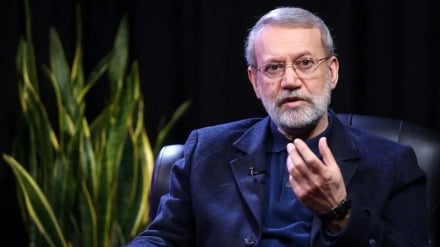Trump’s Art of Confusion in Syria (2)
Anthony F. Shaker is professor of McGill University. Here we present you the second and concluding part of his article titled, Trump’s Art of Confusion in Syria. It was adopted from Global research.org.
Considering the dubious circumstances surrounding the so-called “gas attack,” it may well turn out that the missile strikes will come to haunt Trump for a long time. Worse than sabotaging the Geneva talks, which went dismally bad for the West and Saudi Arabia at the last endless session, they are trickling acid all over Trump’s foreign policy, whether it has been left deliberately inchoate or by accident.
Although Russia and Iran are demanding an independent investigation of the chemical gas incident, the West sought unsuccessfully to pass a modified draft of its original resolution at the Security Council that, once again, implied the guilt of the Syrian government, despite previous objections by other Security Council members and in the absence of even preliminary facts. Should an impartial investigation finally get underway, the tables can easily be turned on the West on its own turf. The whole case against Syria on the use of chemical weapons has been holding together only because of Western solidarity, as if the truth of anything could be established by a simple show of hands. The very idea that the Syrian warplanes’ target might have been a terrorist storage site is ridiculed out of hand as mere Russian and Syrian propaganda. Slowly, however, information is emerging. There are reports based on electronic data indicating that Mohammad Allouch and others on the Saudi- and Turkish-based terrorist delegation knew about the “attack” before it happened.
Post-Tomahawk missile attack is how some media have begun to portray the aftermath of Trump’s change of heart on Syria.
Before the missile strike, the West (US, U.K and France) had been steadily boxing itself into a prickly corner with its almost uniform insistence that “Assad must go.” But Bashar al-Assad is just the president of a sovereign nation, whose fate no other state can be decided. Russia, China and other countries will not permit it. Syria is not Libya in the middle of the North African desert. Historically and geopolitically, it is the cog the undoing of which will bring down the whole edifice, as events in the last six years have clearly indicated.
The Syrian government has already shown readiness to accept the results of a free election, indicating that this is the only means by which divergent political forces will be able to sort out the country’s crisis. This happens also to conform to the principle of sovereignty. For Syria, Russia, Iran, China and others both in Arabic-speaking world and elsewhere, the stress has always been on Syrian political forces—not Saudi regime, Turkey and Zionist regime on behalf of which terrorists are negotiating in Geneva. The Wahhabi armies gathered in Syria from over eighty countries are a big problem, because they are represented on the Saudi-based negotiating committee.
In the end, however, it will probably matter little how many trillions of dollars the UK and France have been hoping to attract from their client Wahhabi monarchies in the Persian Gulf by acting as their shills, or how little the US wishes to disturb Israel’s plan to dominate the Middle East by getting rid of Syria and Iran and dissolving the Palestinian people into meaningless bantustans perpetually deprived of the most fundamental rights.
In a nutshell, the West appears to have found itself inside a box that regimes in Tel Aviv and Riyadh have unwittingly created for it. The logic of this position is simple: all we can do now is continue to insist that Assad must go.
The greatest bluff is when the choice between submission or death is presented to an opponent by a tiny player.
The Western powers persist in the belief that stubborn insistence is their ticket to salvage what is left of the armed “opposition,” which is being systematically wiped out both on the battlefield and through local reconciliation agreements. Behind all this is their obsession with “Iranian influence.” They want Russia to help it get rid of that influence. But this obsession is firmly focused on the Zionist regime, which the West is still struggling to make permanent seventy years on.
The idea of an alliance with Israel against Iran dates from the Reagan years and later picked up by Bush after 9-11. But note the recent stirrings among the American, Israeli, Saudi and Jordanian leaders.
Last February, the Zionist daily Haaretz reported that a plan had been presented, a year earlier, to Benjamin Netanyahu for a regional “peace initiative.” It happened at a secret summit meeting with then-US Secretary of State John Kerry. Saudi regime was in the forefront promoting this idea. Its intense interest in it came to prominent light when Salman al-Ansari, the president of the Saudi American Public Relations Affairs Committee (SAPRAC), founded only in March 2016 as a lobby group in Congress—where Saudi Arabia actively coordinates with Israel on both Syria and Iraq—has called for the kingdom to form a “collaborative alliance” with Israel. The hope is to be done with the “Palestinian issue,” once and for all. Imposing a settlement on the Palestinians backed up by a new “alliance,” goes the argument, would help “stop” Iran.
The Saudi position is now closely mirrored in the new attitude of the Syrian terrorists toward Israel and Iran. This carries serious repercussions for Syria’s legally recognized sovereignty over the Golan Heights, including the Israeli-occupied parts. Now that Trump is in the White House, an alliance would give Saudi regime and the illegitimate Israeli regime a shot at nothing less than regime change in Iran, a project in which some Saudi ministers have been special interest.
The West Asian policy of Trump and, more broadly, of the West looks erratic only to someone who does not acknowledge the original sin that has been driving it: the colonization of Palestine. It was the British mandate that facilitated the creation of a state of Israel in the fragile mosaic of West Asia, the worst possible place for such an experiment. It happened on a land already inhabited by another people whose roots stretch back thousands of years.
The child-killer Zionist regime is now totally adapted to the Western policy that has emerged from this colossal event and which pays only lip service to the illegality of accelerating Jewish-only settlement. The issue of Palestine seems far away from Syria; but it continues to shape the region. Israel is determined to maintain control, by one means or another, of what is left of historic Palestine. It is heavily invested in Syria because its primary objective is to cement this dominance. It utilizes an extensive network of pressure groups across the United States, and consistently lobbies the US Congress for continued war in Syria. It has carried out regular air strikes, which amount to air cover for armed groups fighting the government. It continues to coordinate logistically with al-Qaeda and other elements in the Golan area, Damascus and Homs, sharing satellite and other intelligence with them and providing medical treatment for their combatants. Its deep links with al-Qaeda groups have likely been facilitated by the Saudi regime and Qatar, which routinely negotiates with the Nusra Front on various files.
But the truth of the matter is that Israeli activities with regard to Syria predate this seven-year war. They go back to the 1970s, as newly declassified CIA documents show. Destabilization moved apace since the end of the Clinton administration, after the collapse of the “peace negotiations,” in the course of which Israel consistently refused even to acknowledge the principle of returning the occupied Golan Heights.
After Clinton, Bush pursued his own “vision” for West Asia, Iran and Syria. It was then that Israeli belligerence reached a new crescendo. With Syria forced to end its Arab League-sanctioned presence in Lebanon, the Zionist regime seized the chance in 2006 to launch a murderous attack against Lebanon’s civilian infrastructure—another application of the Madman Theory openly espoused by generations of Zionist leaders.
That month-long invasion was, in effect, the Israeli and American response to new overtures in 2004 and 2005 by the Syrian government to restart peace negotiations. But it ended in failure, the second after its momentous 1982 invasion. This failure is what spurred Zionist regime to move on directly to Syria, just when underground Syrian exiles were preparing their own military game plan, well before the outbreak of demonstrations on Syrian streets in late 2010. The country’s economy had been booming. Syria had been self-sufficient in medicine, manufacturing 95% of its medicines products. It exported pharmaceutical and agricultural products, and its fabrics industry rivaled Turkey’s.
Foreign intervention has practically its economy. But its military has stood its ground. Destroying it or demanding that it be shared with Wahhabi armed elements, which are hungering to take over after a peace settlement, would completely pulverize Syria. Any reasoning person has to infer from the fixation on Assad, not to mention the threat of war crimes tribunals even after a peaceful resolution, that the Western goal must be the destruction of Syria. Either that or the West has gone stark raving mad. As the chaos continues to spread around West Asia with every failure, trying to “pressure” Russia and Iran into abandon Syria seems to be a recipe for a much wider conflagration, one that could easily become uncontrollable.
RM/SS


